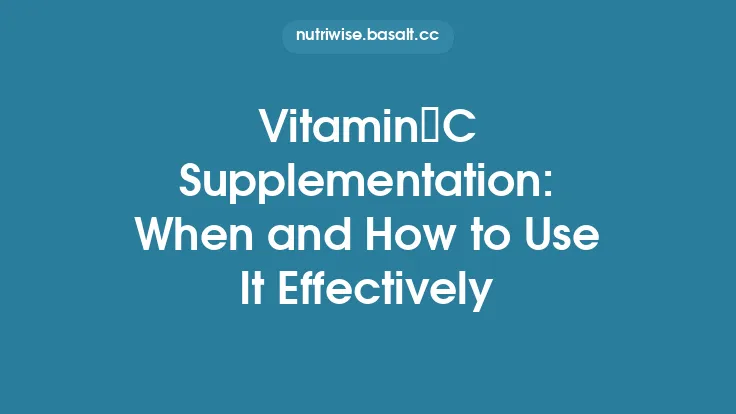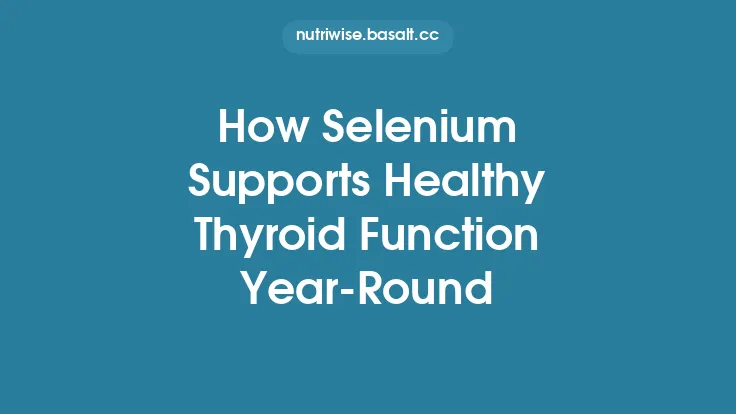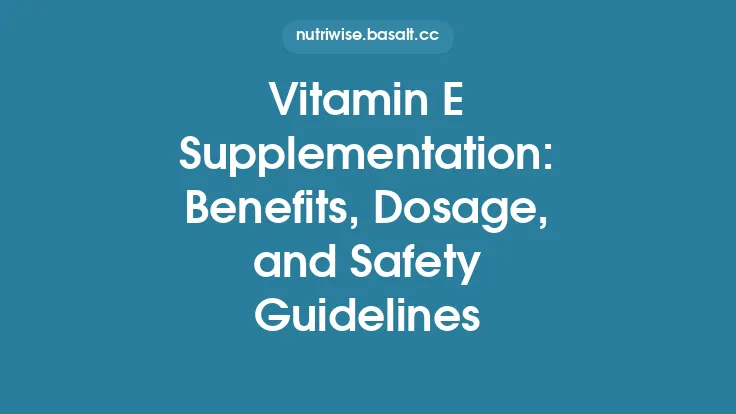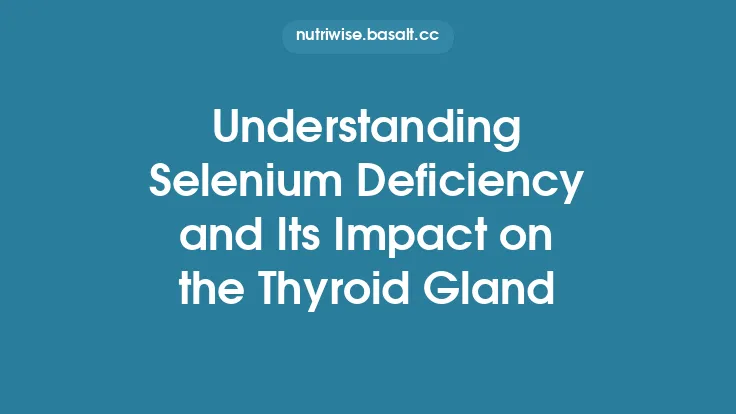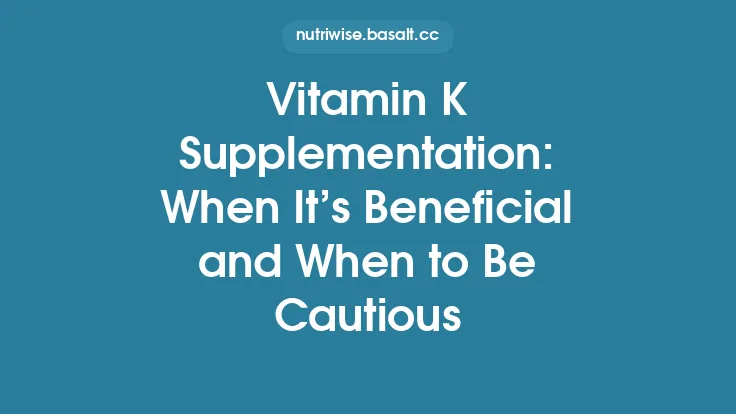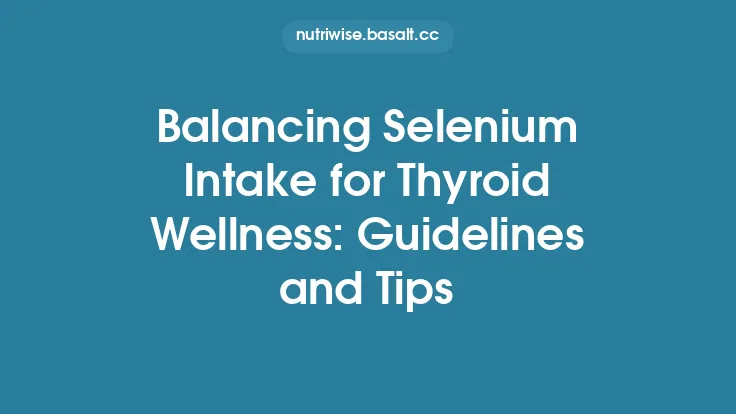Selenium is a trace element that has attracted considerable attention in endocrinology because of its nuanced influence on thyroid physiology. While the basic role of selenium in thyroid hormone synthesis is well‑documented, clinicians and health‑conscious individuals often wonder when adding a selenium supplement is justified and how to do it safely and effectively. This article delves into the evidence‑based criteria for initiating supplementation, the pharmacokinetic considerations that dictate optimal dosing, and the practical steps needed to integrate selenium into a comprehensive thyroid‑support strategy.
Understanding the Therapeutic Window for Selenium
The concept of a “therapeutic window” is central to any micronutrient intervention. Selenium exhibits a narrow range between the amount needed for optimal enzymatic activity and the level at which toxicity becomes a concern.
| Parameter | Approximate Value (Adults) |
|---|---|
| Estimated Average Requirement (EAR) | 45 µg/day |
| Recommended Dietary Allowance (RDA) | 55 µg/day |
| Upper Intake Level (UL) | 400 µg/day (US) / 300 µg/day (EU) |
| Plasma Selenium Concentration for Maximal Selenoprotein Activity | 70–120 µg/L |
The plasma concentration range of 70–120 µg/L is often cited as the “optimal plateau” where selenoproteins such as glutathione peroxidases and iodothyronine deiodinases operate at peak efficiency. Below this range, enzymatic activity may be suboptimal; above it, the risk of selenosis (characterized by alopecia, nail brittleness, and gastrointestinal upset) rises sharply.
Key takeaway: Supplementation should aim to bring plasma selenium into the optimal plateau without exceeding the UL, and this requires individualized assessment rather than a one‑size‑fits‑all approach.
Clinical Scenarios Where Supplementation Is Considered
1. Autoimmune Thyroiditis (Hashimoto’s Disease)
Patients with Hashimoto’s often exhibit elevated thyroid peroxidase antibodies (TPO‑Ab) and may benefit from selenium’s immunomodulatory properties. Randomized controlled trials (RCTs) have shown that a daily dose of 200 µg of selenomethionine for 3–6 months can reduce TPO‑Ab titers by 30–50 % in a subset of patients, particularly those with baseline plasma selenium < 80 µg/L.
2. Subclinical Hypothyroidism with Low Deiodinase Activity
When serum thyroid‑stimulating hormone (TSH) is mildly elevated (4.5–10 mIU/L) but free T4 is normal, impaired conversion of T4 to the active T3 may be a contributing factor. Selenium, as a cofactor for type 1 and type 2 deiodinases, can enhance peripheral T3 production. Clinical trials using 100–200 µg/day of selenium have reported modest reductions in TSH and improvements in symptom scores.
3. Post‑Radioiodine or Thyroidectomy Recovery
After ablative therapies, the thyroid gland’s capacity to store iodine and produce hormones is compromised. Selenium supplementation (150–200 µg/day) for 6 months has been associated with faster normalization of thyroid function tests and reduced oxidative stress markers.
4. Geographic or Dietary Selenium Deficiency
Populations residing in low‑selenium soils (e.g., parts of China, Europe, and the Pacific Northwest of the United States) may have chronically low plasma selenium despite adequate iodine intake. In such settings, a prophylactic supplement of 100 µg/day can bring selenium status into the optimal range and indirectly support thyroid health.
5. High‑Risk Occupational Exposure
Workers exposed to oxidative stressors (e.g., radiation technicians, industrial welders) may experience increased demand for antioxidant selenoproteins. Targeted supplementation can mitigate oxidative damage to thyroid follicular cells.
Choosing the Right Selenium Form
Selenium is available in several chemical forms, each with distinct absorption kinetics and tissue distribution:
| Form | Typical Bioavailability | Tissue Retention | Clinical Preference |
|---|---|---|---|
| Selenomethionine | ~90 % | Incorporates into general protein pool; long‑term storage in muscle | Preferred for chronic supplementation and trials targeting autoimmunity |
| Selenite (Na₂SeO₃) | ~70 % | Rapidly reduced to selenide; preferentially used for selenoprotein synthesis | Useful for short‑term, high‑dose protocols |
| Selenate (Na₂SeO₄) | ~60 % | Less studied; metabolized similarly to selenite | Rarely used clinically |
| Organic Selenium‑Enriched Yeast | ~80 % | Mix of selenomethionine and other organic species | Common in over‑the‑counter (OTC) products; good for general health |
Practical recommendation: For most patients seeking to modulate thyroid function, selenium‑enriched yeast or pure selenomethionine capsules provide the best balance of bioavailability and safety. Selenite may be reserved for short, supervised therapeutic courses.
Dosage Strategies and Timing
Loading vs. Maintenance
- Loading Phase (optional): 200 µg twice daily for 2 weeks can quickly raise plasma selenium in severely deficient individuals. This approach must be followed by a maintenance dose to avoid overshoot.
- Maintenance Phase: 100–200 µg once daily is sufficient for most adults. The exact dose should be calibrated to baseline selenium status and the therapeutic goal.
Timing with Meals
Selenium absorption is not markedly affected by food, but co‑administration with high‑fat meals can modestly increase uptake of selenomethionine. For consistency, advise patients to take the supplement at the same time each day, preferably with breakfast.
Split Dosing
When using doses > 200 µg/day, splitting the dose (e.g., 100 µg morning, 100 µg evening) can reduce gastrointestinal discomfort and improve tolerability.
Potential Interactions and Contraindications
| Interaction | Mechanism | Clinical Implication |
|---|---|---|
| Vitamin E | Synergistic antioxidant effect | May enhance protection against oxidative thyroid damage; no dose adjustment needed |
| Heavy Metals (Hg, As, Pb) | Selenium forms insoluble complexes, reducing toxicity | Beneficial in populations with high metal exposure; monitor for selenium excess |
| Antithyroid Drugs (Methimazole, Propylthiouracil) | May alter selenium metabolism | No direct contraindication, but monitor thyroid function closely |
| Statins | Possible reduction in selenoprotein synthesis | No strong evidence of clinical impact; routine monitoring advised |
| High‑dose Vitamin C | Competes for intestinal transporters | Separate dosing by at least 2 hours if both are used at high doses |
Contraindications: Known hypersensitivity to selenium compounds, active selenosis, and pregnancy beyond the first trimester (where the UL is lower, ~ 200 µg/day) should preclude high‑dose supplementation.
Monitoring Response and Adjusting Therapy
- Baseline Assessment
- Serum selenium (µg/L) via atomic absorption spectroscopy or ICP‑MS.
- Thyroid panel: TSH, free T4, free T3, and thyroid antibodies (if autoimmune disease is present).
- Oxidative stress markers (optional): plasma glutathione peroxidase activity, malondialdehyde.
- Follow‑Up Intervals
- 4–6 weeks: Re‑measure serum selenium to confirm entry into the optimal plateau.
- 3 months: Re‑evaluate thyroid function tests and antibody titers.
- 6–12 months: Annual monitoring to ensure plasma selenium remains below the UL and to assess long‑term clinical outcomes.
- Adjustment Algorithm
- If plasma selenium < 70 µg/L: Increase dose by 50 µg/day.
- If plasma selenium 70–120 µg/L: Maintain current dose.
- If plasma selenium > 120 µg/L but < 200 µg/L: Consider dose reduction by 25–50 µg/day.
- If plasma selenium > 200 µg/L or symptoms of selenosis appear: Discontinue supplementation immediately and reassess.
Special Populations: Pregnancy, Elderly, and Athletes
Pregnancy and Lactation
- Requirement: 60 µg/day (RDA) is sufficient for most pregnant women; however, those with low baseline selenium may benefit from a modest supplement (50–100 µg/day) under medical supervision.
- Safety: Avoid exceeding 200 µg/day to stay within the pregnancy‑specific UL.
Elderly (≥ 65 years)
- Age‑related decline in gastrointestinal absorption and renal clearance can alter selenium kinetics. A lower maintenance dose (100 µg/day) is often adequate, with close monitoring for both deficiency and excess.
Endurance Athletes
- Intense training elevates oxidative stress, potentially increasing selenium turnover. Studies in elite runners have used 200 µg/day of selenomethionine for 8 weeks, reporting improved recovery of thyroid hormone ratios (T3/T4). Individualized dosing based on baseline status is recommended.
Safety Profile and Toxicity Thresholds
Selenium toxicity (selenosis) is rare at doses below the UL but can manifest with chronic intake > 400 µg/day. Early signs include:
- Dermatologic: Hair loss, brittle nails, skin rash.
- Gastrointestinal: Nausea, vomiting, abdominal pain.
- Neurologic: Peripheral neuropathy in severe cases.
Laboratory confirmation involves plasma selenium > 200 µg/L and elevated urinary selenium excretion. Prompt dose reduction or cessation typically reverses symptoms.
Integrating Selenium Supplementation into a Holistic Thyroid Care Plan
- Nutritional Foundation: Ensure adequate iodine, zinc, iron, and vitamin D, as these nutrients interact synergistically with selenium.
- Lifestyle Modifications: Stress management, regular physical activity, and avoidance of environmental toxins (e.g., smoking, excessive alcohol) support optimal selenoprotein function.
- Pharmacologic Coordination: Align selenium dosing with levothyroxine or liothyronine therapy to avoid timing conflicts; a 30‑minute gap between medication and supplement is advisable.
- Patient Education: Emphasize the importance of adherence, periodic testing, and reporting of any adverse symptoms.
Future Directions in Research
- Genetic Polymorphisms: Variants in the *SEPP1 and DIO2* genes may modulate individual response to selenium; personalized supplementation based on genotype is an emerging field.
- Nanoparticle Selenium: Preliminary animal studies suggest that selenium nanoparticles have higher bioavailability and lower toxicity, opening possibilities for next‑generation supplements.
- Long‑Term Outcomes: Large‑scale, multi‑center RCTs are needed to clarify whether selenium supplementation can reduce the incidence of overt hypothyroidism or thyroid cancer in high‑risk cohorts.
Bottom line: Selenium supplementation can be a valuable adjunct in the management of specific thyroid conditions when applied judiciously. By assessing baseline selenium status, selecting the appropriate chemical form, dosing within the therapeutic window, and monitoring both biochemical markers and clinical response, healthcare providers can harness selenium’s unique enzymatic support without courting toxicity. As research evolves, the integration of genetic insights and novel delivery systems promises to refine this micronutrient’s role in thyroid health even further.
